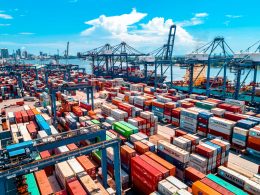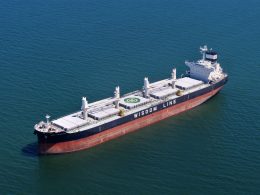Freight schedule disruptions present significant opportunities for commodity traders to capitalize on event-driven volatility. In today’s world, marked by geopolitical conflicts, climate volatility, and labor unrest, having precise and timely intelligence can make the difference between substantial profits and missed opportunities. Here’s a closer look at how traders can leverage such disruptions and the strategies to develop a robust intelligence network.
Key Opportunities from Freight Disruptions
- Red Sea Diversions: Recent Houthi attacks have extended Asia-Europe shipping times by over 10 days. Traders who can anticipate such disruptions gain a crucial advantage in the commodities market, potentially front-running and capitalizing on price movements before the broader market reacts.
- Panama Canal Delays: Drought conditions affecting the Panama Canal have caused significant shipment delays and increased costs. Traders who monitor these conditions closely, perhaps through local contacts or real-time satellite data, can forecast shipping delays and adjust their strategies accordingly.
- Port Strikes and Labor Disputes: Strikes at key ports can halt operations for weeks. Early warnings from informants within port facilities can enable traders to make preemptive moves, either by adjusting delivery schedules or capitalizing on anticipated shortages.
- Extreme Weather Events: Disruptions in rail lines and trucking routes due to extreme weather can affect commodity prices. By partnering with meteorologists and local logistics contacts, traders can predict these impacts more accurately and respond swiftly.
Building an Effective Information Network
To systematically stay ahead of these disruptions, traders need to develop a diverse and reliable network of informants. Here’s how:
- Port Workers: Establish relationships with dockworkers, port managers, and union representatives. These individuals can provide early warnings about potential strikes, delays, or security issues affecting port operations.
- Railroad Employees: Engage with employees and contractors working on major rail lines. They can offer insights into infrastructure issues, maintenance schedules, and unexpected delays that might impact freight movement.
- Truckers: Truck drivers, especially those involved in long-haul routes, can share real-time information about road conditions, weather impacts, and logistical bottlenecks.
- Meteorologists: Partner with weather experts who can provide forecasts and early warnings about extreme weather events likely to disrupt freight routes.
- Local Logistics Contacts: Cultivate contacts in key logistics hubs. These could be employees at freight forwarding companies, customs brokers, or local shipping agents who have on-the-ground insights into operational challenges.
Leveraging Human Intelligence (HUMINT)
Human Intelligence (HUMINT) remains a valuable asset in predicting and profiting from freight disruptions. Here are some practical steps to harness this resource:
- Cultivate Relationships: Building trust with informants is crucial. Regular communication and fair compensation for valuable information can ensure a steady flow of insights.
- Use Technology: Combine HUMINT with technological tools such as satellite imagery, real-time tracking systems, and data analytics to verify and enhance the information received.
- Stay Informed: Regularly update your network with new contacts and sources to adapt to changing environments and maintain a competitive edge.
Real-World Examples
A trader who monitored local news and had contacts at the Panama Canal was able to predict delays caused by drought conditions, allowing them to buy commodities at lower prices before the market adjusted.
Similarly, another trader, forewarned by a port worker about an impending strike, adjusted their shipment schedules, avoiding costly delays and securing advantageous positions in the market.
Conclusion
In a world where freight disruptions are becoming more frequent and impactful, developing an intelligence network comprising port workers, railroad employees, truckers, meteorologists, and local logistics contacts is essential.
By leveraging HUMINT, traders can gain a substantial edge in forecasting and profiting from the volatility induced by these disruptions. The key lies in building reliable relationships, integrating technology, and staying adaptable to changing conditions.








